“The problem with the conservation movement is that it has clear conscience.” — Wendell Berry.
DISCLAIMER: This story makes no attempt to offer ‘solutions’, nor do I have any illusions, when considering the Future of Moab, Utah. I am simply trying to record its transformation from a quiet, rural community to whatever it has become in 2019. These kinds of Zephyr stories are, more than anything, historical documents. Accountability matters.
There might have been ways to alter Moab’s destiny—but those opportunities were squandered years ago. Today I no longer have a vested interest in Moab. I’m simply an observer from afar, who still remembers and cherishes the Moab I called home, and who finds it heartbreaking to see what Moab has become…JS
For 20 years, Utah environmentalists have managed to deny or ignore the impacts of “Industrial Strength Tourism,” and have even been some of its biggest supporters and promoters. They are Big Green Money’s enablers. The environmental mainstream has partnered with recreation industry giants like Patagonia and North Face and have advocated for tourism as a clean and sustaining alternative to other types of economies. Even in the face of overwhelming evidence of environmental destruction from recreation, the mainstream environmental community has mostly stayed shamefully silent.
Just a couple years ago, the Southern Utah Wilderness Alliance asked its members what they thought were the greatest threats to wilderness in Utah. In their multiple choice survey, out-of-control Industrial Tourism (other than its 30 year of obsession with ATVs) wasn’t even included as an option.
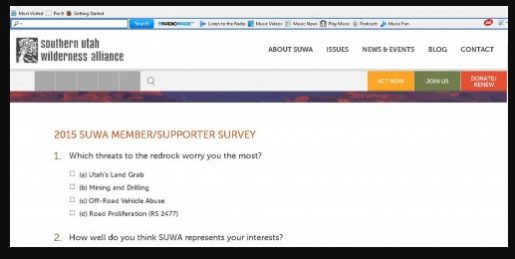
The noted author and environmental activist and SUWA board member Terry Tempest Williams even supported The Wilderness Society’s (TWS) efforts to re-direct tourists to the national parks’ “Best Kept Secrets.” SUWA got into the act, asking on social media for its followers to reveal their “hidden gems.” What in the world were they thinking?
Neither TWS, nor Ms. Williams, nor SUWA, seems to remember that in the recent past, Arches National Park was one of those “best kept secrets” too. Look what happened to the “hidden gem” that was once Arches National Park.
Over three million tourists came to the Moab area in 2018. Two million of them pushed and shoved their way into Arches NP. It’s not a well-kept secret anymore.
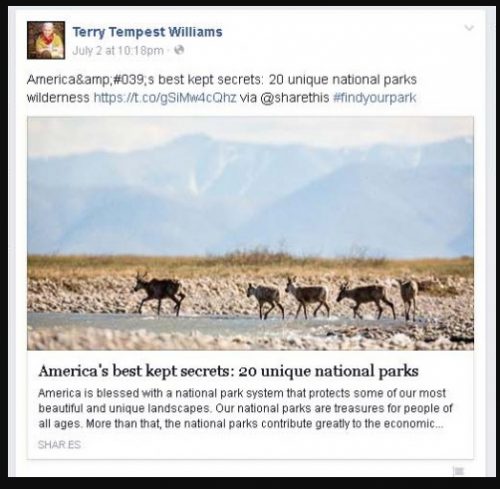
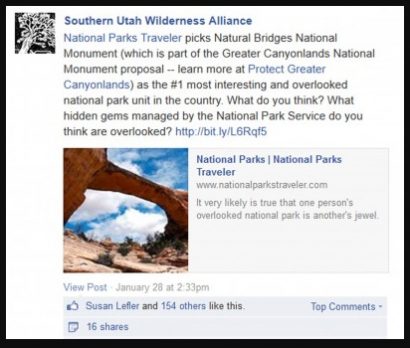
Most Zephyr readers know that this difference of opinion on perceived Industrial Tourism impacts is what led to a parting of ways between Utah “professional” enviros and this publication. We’ve been talking about the destruction caused by a massive tourist-based economy, going all the way back to 1991 when I penned “New West Blues” for the Zephyr and eventually High Country News.
The Zephyr’s warnings about Industrial Tourism were not well-received by the mainstream environmental community in Utah. Their ire reached a flash point more than a decade ago when I penned an op ed for High Country News called “SUWA Can You Spare a Dime?
While my essay noted that, “SUWA remains Utah’s most vigilant watchdog of off-road vehicle abuse, oil and gas exploration and public lands grazing,” I was critical of their failure to address environmental impacts from the booming recreation economy. I proposed that, with its $5 million in net assets, SUWA could share some of its largesse with smaller green groups that were not so flush with funds.
When the story ran in the Salt Lake Tribune, SUWA’s Scott Groene demanded rebuttal space from Betsy Marston, the Writers on the Range editor. But when it arrived, she found the article so steeped in anger and vitriol that she asked Groene to remove them; she advised him to re-write his essay, without the nasty stuff, and re-submit. But he never did. Instead, he found a sympathetic editor at the Salt Lake Tribune who would print the story “as is.” It was a doozy. In part, Groene wrote:
“Part of desert country’s magic is that it nourishes eccentricity,” Groene explained. ” Jim is part of that, our own Barney Fife. He’s worth having around though, even if we have to clean up after him now and again.
“Typically enough, Jim’s rant says less about SUWA than about Jim’s own curious little world. As its only resident, he’s in charge. He gets not only his own opinion but his own facts.”
The Trib gave me a few lines to respond in its “Letters” section. “Now that I have had the gall,” I wrote, “to disagree with some of SUWA’s strategies and to suggest that it might want to share even a fraction of its $5 million bankroll with other enviro groups, I appear to be in the doghouse. And with Barney Fife no less.”
More importantly, I recalled the words of Edward R. Murrow, who wrote, “‘We must not confuse dissent with disloyalty. When the loyal opposition dies, I think the soul of America dies with it.”
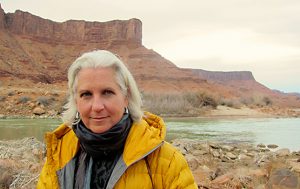
It’s been sort of downhill ever since. I was gratified when Terry Tempest Williams later spoke in my behalf, via an offered blurb for “Brave New West.” In part she wrote:
“Jim Stiles holds up a mirror to those of us living in the American West, exposing issues we may not want to face. We are all complicit in the shadow side of growth…I would call Stiles a writer from the future. Brave New West is a book of import because of what it chooses to expose. “
And in an email to me in November 2003, Terry told me that, “This problem of recreation and wildness, wilderness, has escalated to the point they/we have to look at it. And I appreciate you holding them accountable.” But nobody else did.
Even Williams has been silent on the issue of recreation/tourism impacts for the past decade. But she was and is still right—these are definitely issues that most environmentalists do “not want to face.”
But finally, in the Spring of 2019, , as Industrial Tourism wreaks havoc on the Moab community and the lands beyond the city limits, and as other communities across the American West buckle under similar stresses and impacts, it’s interesting to note that some of these same devoted “green” Utah spokespersons finally…FINALLY… are starting to hedge their bets, if even in the most tepid and milquetoast of ways. They have finally “come out” and agreed that maybe their beloved “clean and sustaining” the tourism/amenity economy has some drawbacks. And they come with some “solutions.”
Let me offer some recent examples…
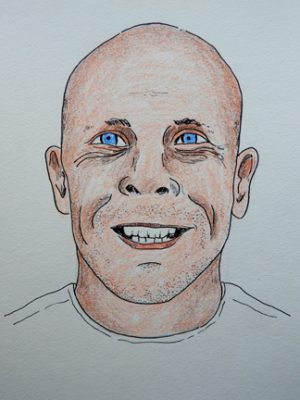
KEVIN WALKER is a former SUWA staffer who once played a crucial role in the wilderness citizens inventory. The search increased the size of the Red Rock Wilderness Bill from 5.7 million acres to the almost 10 million acre behemoth it is today (The bill has never come close to passing in the US Congress). He is now Grand County’s Democratic Party chairman and has been a strong advocate for a tourist economy.
In 2014 Walker denounced the energy industry saying, “This is a crazy place to have oil and gas drilling.” And in a T-I guest essay, he wrote:
“A large majority of Grand County residents, across a wide political spectrum, agree that the recreational and scenic opportunities afforded by public lands are what make this a great place to live. If we want our grandchildren to be able to have similar opportunities, then we need to act now to ensure that undeveloped public lands are not gradually lost to shortsighted development schemes.”
As we watch Moab being transmogrified at a stunning rate, do any of these changes look like “shortsighted development schemes” to Kevin?
But now Walker sees there might be a problem. In a recent guest essay to a Moab weekly, he notes that while some people have been complaining about tourism for thirty years (Me?), he also admits that, “the past five years have been different.”
He still clings to the economic benefits angle and maintains that, “a healthy, stable tourism industry is an asset to our community.” But he offers a day late/dollar short caveat. Kevin admits, “an out-of-control, rapidly expanding tourism industry is a threat to our quality of life.”
Just in the nick of time.
Walker believes that Grand County should take the millions of dollars that it receives in Transient Room Tax revenues (TRT) and instead of further promoting the area, the County should use some of that money to educate the masses. How? He thinks some signs and pamphlets might do the trick.
For example he writes that the county could “re-direct these funds away from ‘Come to Moab’ messaging and toward ‘Stay on the Trail’ messaging.”
Yes, some regulatory signs are just what Grand County needs to save it from utter destruction and chaos. Walker writes, “we could spend that money educating the tourists who are already here on how to lessen their impact.”
All three million of them.
His specific plans include, “local newspaper ads, social media campaigns, pamphlets and videos in hotels, information boards at trailheads, etc.” He thinks, “trail ambassadors could employ locals to spread the word at popular trailheads” and urges the messaging to be “translated into the many languages used by our international visitors.”
Almost bewilderingly, he performs some remarkable splitting of hairs when he insists that mandated TRT monies:
“…need not be spent on promoting tourism. …It could instead be spent on promoting recreation.”
Say what? “Promoting recreation but not tourism?” You mean…like this?
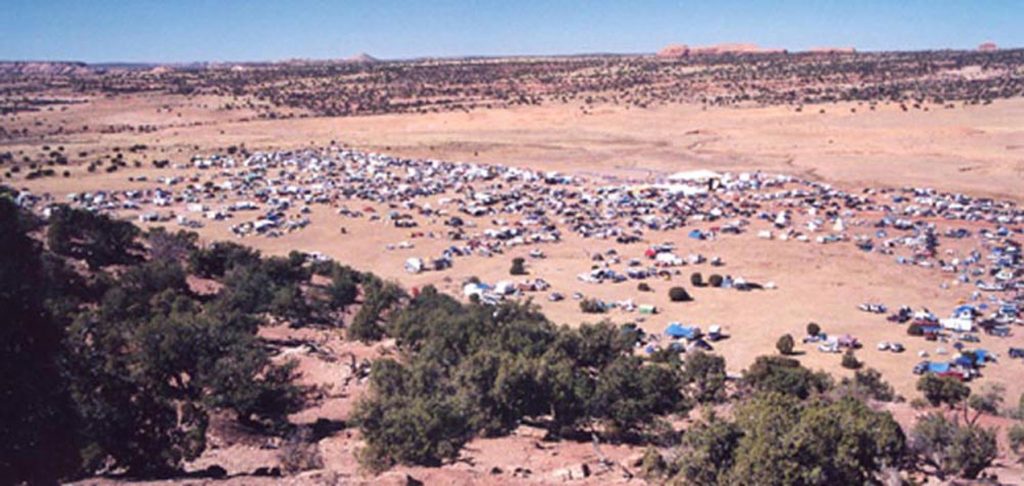
That’s a 2003 photograph of the “24 Hours of Moab” bike race, which ran for several years on state lands south of Moab. Looks like recreation to me. The race course was directly adjacent to proposed wilderness and for years, I pleaded with SUWA staffers to at least go out there and monitor the damage being done. Not once did any of them bother.
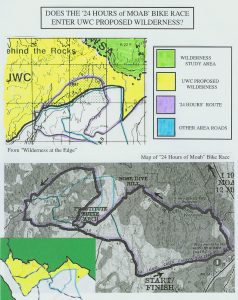
In fact, SUWA initially embraced ’24’ and declared in this publication that, “The mountain bike community is a large advocacy group promoting low impact recreation…We believe that both wilderness advocates and biking enthusiasts have a lot to gain by working together…”
And while SUWA insisted the race was outside its proposed wilderness proposal, I discovered in 2006, after comparing maps and routes, that for years the race had crossed wilderness lands undetected, unnoticed (or they just didn’t care). Walker denied it and even called me a liar in High Country News: “His claim is completely false… I think it is indicative of a larger issue — Jim’s tendency to stick stubbornly to his opinions even when the facts don’t support them.”
(Later I confronted Walker and SUWA’s executive director with the evidence. Even Kev had to admit to the mistake.)
* * *
That was almost 15 years ago. In 2019 —whether you live in Moab/Grand County or you’re just visiting— ask yourself, what is it that is destroying or diminishing your experience? What industry is negatively altering your life almost every day? What industry is disrupting wildlife and causing long-term damage to the environment beyond the Moab city limits? Is it really the pumpjacks in the Book Cliffs and on the Island in the Sky? Really? Or is it the daily nightmare of an exploding and out-of-control Industrialized Tourist Economy that is making your lives and every living creature miserable?
And will some signs and pamphlets help?
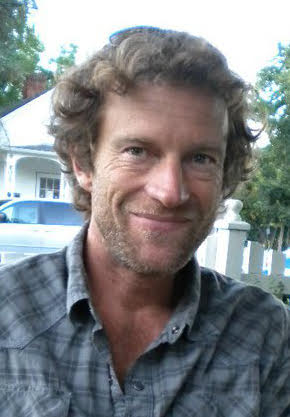
Parroting Walker, fellow green activist DANNY KENT also contributed a letter to the local papers. Kent was a SUWA player for years and a staffer for the now defunct Red Rock Forests. Kent writes, “Growth is the capitalist’s mantra. If all growth is good, Moab is wildly successful.” But then he wonders, “Then why does it feel like there’s a lot of discontent, grumbling and anxiety in our town?”
Because, he explains, “Growth is good. Too rapid growth is not.” Kent agrees with Walker that “we’re creating discomfort and destruction with our rapid, careless expansion of the tourist economy, with few benefits for citizens, just profits for developers.”
Somehow, only now, almost 15 years after I confronted Kent (and Walker) with my own concerns about Industrial Tourism, have they decided to even mention it publicly.
So..what should we do? Kent suggests, “Grand County Council needs to shift money away from carelessly advertising to potential visitors and shift that money into information, education and hospitality campaigns to contact visitors with a low-impact message that focuses on understanding, interpreting and enjoying our beautiful and uniquely impressive surroundings.”
Kent suggests that Moab needs a limited growth model —“towns that grow at 1 or 2 percent enjoy the benefits of growth without suffering the consequences of overly rapid economic expansion.”
But he never offers a single clue as to how such a goal can be accomplished. Nor does Kent explain what he plans to do with the three million visitors who already visit Moab annually? Moab’s severely bloated tourist infrastructure depends on them. Both Kent and Walker seem to be pandering to Moab’s tourist economy; do they have some plan to let that economy recede to its 1989 levels? How’s that going to fly with the Chamber of Commerce?
Is it possible Kent and Walker have been talking to each other lately?
* * *
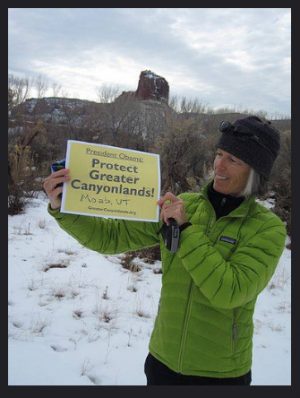
Meanwhile, SUWA board member and former staffer LIZ THOMAS and former Canyonlands National Park superintendent WALT DABNEY have expressed their own public concerns and have even created an organization to deal with them. The pair have established the “Moab Area Responsible Recreation and Tourism (MARRT) citizens’ working group.”
Thomas told a Moab weekly that, “Just by sheer numbers, the trails are getting hammered.” It’s gratifying to see Thomas acknowledging that “sheer numbers” of individuals can cause environmental damage. She wasn’t so sure a while back.
I’ve mentioned the 24 Hours of Moab bike race in this story. In 2002, when Liz was a staffer in the Moab SUWA office, I urged her to monitor the damage. She wasn’t even aware of the race until I reminded her. And she advised me that since the race was technically outside their wilderness proposal (one foot), it wasn’t a priority, or even on their agenda… What ensued in that email thread of October 11, 2002 went like this. In part, we wrote:
STILES: if you’d heard that there were going to be 6 thumper trucks, instead of 6000 non-motorized recreationists, working right on the edge of proposed wilderness, ten miles from Moab, you would have been out there in force. You guys would have been all over it weeks ago. This is EXACTLY what I’m talking about. This is just like the canyoneering issue…If it isn’t cows, if it isn’t oil, if it isn’t ATVs, SUWA is not going to touch it
THOMAS: Comparing this race to 50,000 lb. thumper trucks driving x-c in a proposed wilderness area is ludicrous. and, suggesting that SUWA would ignore the race if it were, in fact, in proposed wilderness, is just plain wrong.
STILES: Liz, you didn’t even know where the routes were at 5pm today. Why were these areas excluded in the first place from possible wilderness? ‘Established jeep roads?’ Are they constructed roads with a road base and culverts and all the requirements that SUWA has established to make them roads? Why were these roads not worthy of demanding their closure? What do you think causes more trauma to most of the living things out there adjacent to the race course? A thumper truck rolling through the cryptobiotic soils once? Or thousands of people hammering the same ground over and over? Do you think those people really stay out of the proposed areas? How would anybody know????? None of you seem to know.
That was the end of the conversation. Liz never responded to my suggestion that “thousands of people hammering the same ground over and over,” might cause significant damage to a resource we both love. Now, almost 16 years later, it’s gratifying to learn that even SUWA’s Liz Thomas sees the cumulative threat as well.
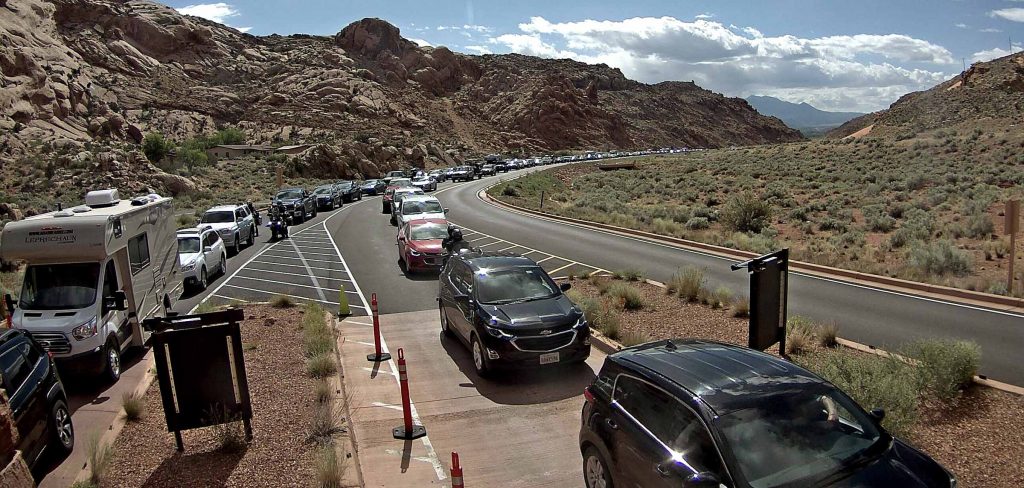
And again… how do Thomas and Dabney plan to address the impacts being created by the three million annual visitors who now come to the Moab area? Once again, by education of course.
Dabney told the Moab Sun News that, “I think 95 percent of people are trying to do what’s right and have no interest in hurting anything… And so to the extent we can get more information out to help them understand what the right way to visit an archaeological site, or why you need to stay on trails — those kinds of things —they’re going to do it.”
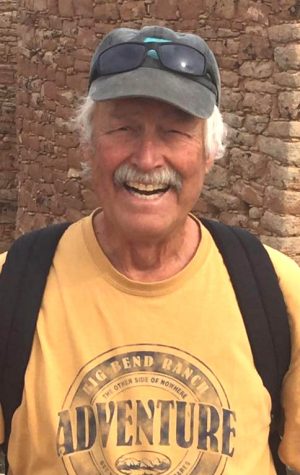
So for starters, Dabney is insisting that he has no problem at all with the 2,850,000 annual visitors to Moab whom he thinks could be good stewards of the canyon country….
Two million, eight-hundred and fifty thousand…think about that. 2,850,000 harmless idiots, who can be re-educated. People who don’t know what a trash can is.
But if a portion of that remaining 5% of three million are the type who will “do whatever they want,” as Dabney notes, that still leaves up to 150,000 reckless Land Destroyers out there, every year, tearing the hell out of the environment… and the numbers keep rising. How do they plan to educate that many incorrigibles?
Dabney vaguely proposes a beefed up law enforcement presence, though how it would be paid for, or how a very limited police force could monitor and manage the thousands of miles of jeep and bike and hiking trails in the area was not explained. But Dabney thinks that educating the visitors and “enhancing peer pressure” might help.
Best of all the Sun News reported that:
“(Dabney) envisions witty signage posted inside the vault toilets at popular trailheads to encourage trail ethics in the people who are about to head out on a trail. There are signs at many trail heads, but they may be outdated or too small to capture people’s attention.“
Twenty-two years ago, when Dabney was still Canyonlands National park’s superintendent, Lance Christie interviewed Walt for a Zephyr interview. It appeared in the October 1997 issue. At the time, Dabney made this observation about runaway recreational use and the way ‘wilderness’ needlessly draws attention. He told Christie:
“I think it is pure folly to just designate lands as wilderness unless you are going to put some significant resources in there to manage it. Otherwise, you’re just targeting it—drawing a big bull’s eye on the map for folks to flock to. One of the problems we have today is that, if a place is any good, somebody’s already written a guidebook to it or is doing so. If you highlight it on the map and the guidebook comes out, you’d better have staff to manage it or it’s going to get trashed.”
Moab has been “highlighting” itself ever since and the problems Dabney discussed then pale by today’s destruction. In 1997, Arches annual visitation exceeded 800,000. Last year, it passed 2,000,000.
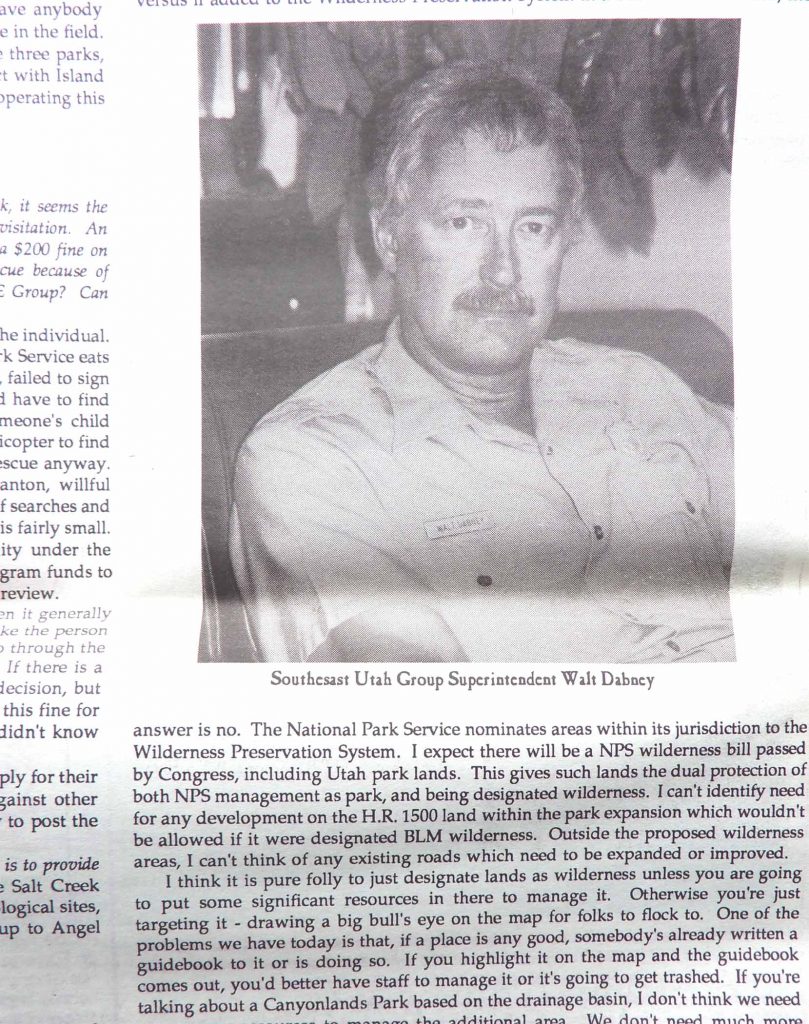
It might be fair to say, reviewing all these suggestions by Kevin Walker, Dan Kent, Liz Thomas, and Walt Dabney, that Moab environmentalists have a lot of faith in signs.
* * *
As the community grapples with exponential growth, other ideas have been introduced. At Arches National Park, visitation has exploded. As noted, in 2018 the numbers blew past two million and never looked back. The National Park Service has proposed a limited reservation system during peak periods and it is difficult to fathom such a drastic measure. After all, when I worked there as a ranger in the 1980s, annual visitation was less than 400,000. Today’s numbers are staggering.
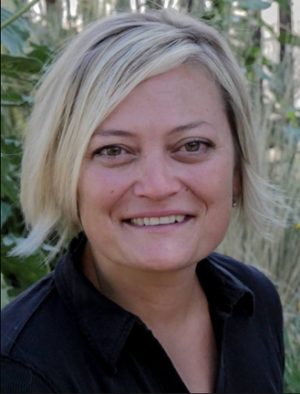
But an NPS study suggested that such a system might negatively impact the local tourism economy by millions of dollars. Local business owners’ heads exploded. Moab’s current mayor, EMILY NIEHAUS, and her city council, all staunch “progressive environmentalists,” responded positively to the idea… at first. But as pressure mounted from the monied folks on Main Street, the mayor/council’s enthusiasm waned. Niehaus hedged:
“The study shows a big hit for the first year. However, if it means organized and sustained long-term growth, maybe it’s worth the trade-off,” she said. “Stay tuned. The council is certainly going to go through the report. We are responsive to business. What happens to business happens to us.”
Though the City has placed a temporary six month moratorium on new commercial construction, the number of permits already in the pipeline are staggering. And Moab City has done this before… Let’s see how long it lasts before pressure from the business community allows the city’s leaders to “mitigate” the concerns as it has done so many times before.
I think it was Calvin Coolidge who once proclaimed, “The chief business of the American people is business.” In 2019, Cal’s mantra stands tall in Moab.
* * *
Moving on…(and South)
BILL LOVE and DAVE ERLEY have both been enthusiastic proponents of a tourist-based amenities economy and have aggressively opposed the energy industry. But recently, both Love and Ehrley publicly expressed concerns about proposed developments on SITLA lands in San Juan County at the south end of Spanish Valley. The plan is stunning and there are estimates that as many as 7000 new residents could occupy the area within a decade. It would in effect be a brand new town.
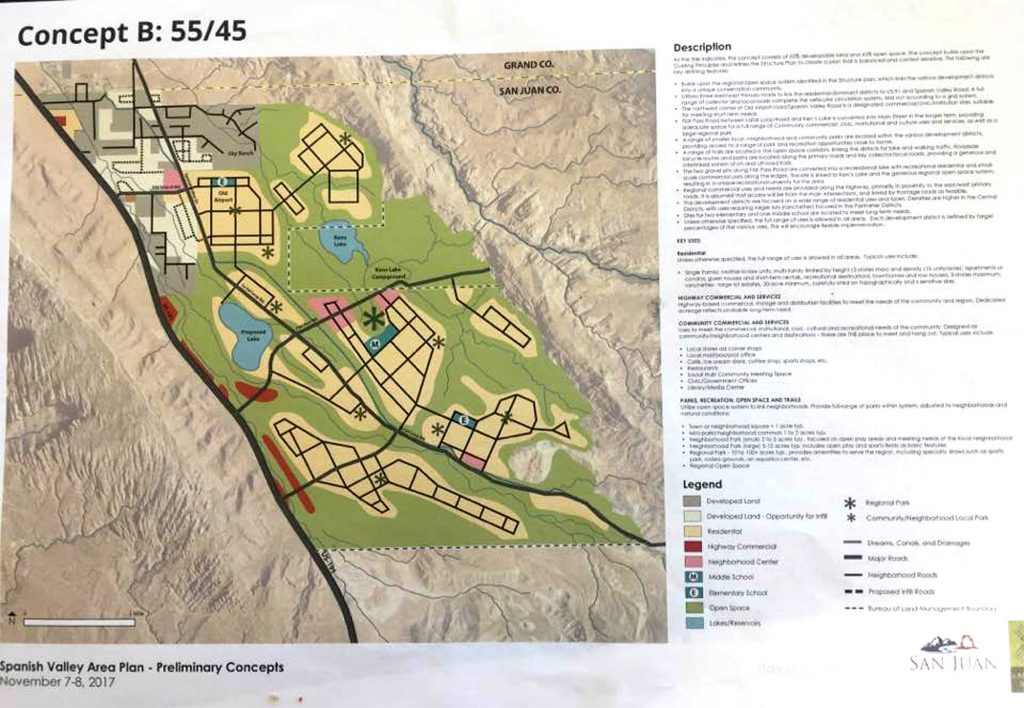
Currently, just the threat of a Love’s Truck Plaza is enough to worry BILL LOVE. In a letter to the local paper, he wrote, “SITLA’s sale of property to an operation that is known to attract drug dealers, prostitutes and transients will result in an adversary conflict between SITLA and the local residence. [sic]” And yet, with that kind of existential threat to his well-being, Love suggested that moving the project a couple miles down the road, across the county line, would be okay. He wrote, “The truck stop can be moved south of the Old Airport Road.”
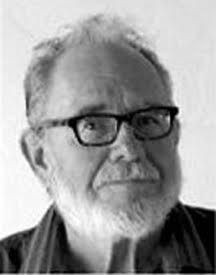
Bill Love has expressed concern about those SITLA lands to The Zephyr before. In 2003, Love was horrified that a state section was being overgrazed at the far end of Spanish Valley. in an email to the Z, he wrote, “Range Net is running a contest for the most overgrazed allotment in the western United States. The SITLA land around Ken’s Lake has been nominated.”
But what’s worse? I asked Bill: “I’m trying to get a feel for just where environmentalists stand on this grazing issue….If SITLA announced that it wanted to take that overgrazed allotment and build 500 affordable housing units on it—would that be an agreeable alternative for you?”
Bill replied, “Your question cannot be answered because you are assuming there are only two choices for public lands and those are a cow or a house. Your question ignores the many alternatives that can include recreation, wildlife, housing, gravel mining, and grazing in the Ken’s Lake area. I cannot pick a house or a cow as the solution”
So…me being me, I pressed: “It’s purely hypothetical Bill… if you had only those two choices which is the lesser of two evils. Choosing the lesser of two evils is hardly a strange concept. It is the foundation of American politics. Can’t just ONCE…a Utah enviro give a straight answer? I can…if those were my only choices I’d leave it overgrazed.”
I didn’t hear from him again…the unanswered question lingered.
Three years later, in 2006, SITLA moved forward with plans to develop a state section just east of the city limits, the Lions Back Resort; I asked Bill Love what could be done to stop it. Love wrote, “I can’t see any way to stop Lions Back. The area will have more than 50% open space and does not contain any sensitive lands, that I know of. My goal is to try to prevent the entire valley from being 4 units per acre or even higher.”
I’m not sure if the Love’s truck stop will reside on “sensitive lands” or not, but what I’m really curious to know is, if Bill thinks the truck stop is an unholy haven for ” drug dealers, prostitutes and transients,” how does re-locating it three miles north, inside Grand County, make him feel any safer? (and what’s he got against prostitutes and transients anyway? They need “Love” too.)
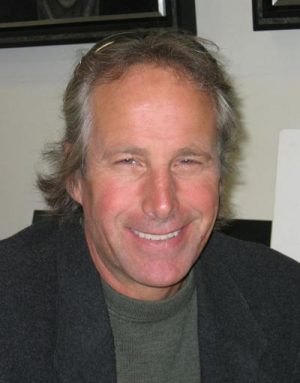
DAVE ERLEY also offered his two cents on the Spanish Valley plan, citing water concerns about the massive new SITLA development. He even called his guest essay, “We’ve been SITLA’d.” Erley complained that, “SITLA resorts to such blatant bullying of a community and its irreplaceable water. There is lip service to being a good neighbor, but then you wake up with a Love’s truck stop in your backyard. You are left to wonder if SITLA really cares about anybody in Grand County.”
What neither Love nor Erley wants to address or confront is the question that should be haunting both of them. And that’s— why. Why is there such an interest in developing this huge block of state sections at the far southern end of the valley? What happened that made these somewhat desolate parcels of ground suddenly so appealing?
The answer, of course, lies in the booming metropolis just north of them. These state lands were relatively worthless; for decades SITLA leased them out to ranchers (thus all that overgrazing.) And elsewhere in Utah, much of the land has been left intact. But the big SITLA land sections were and are pure gold to speculators. And The Zephyr made that very point back in December 2008.
In an article called “SITLA Looks Ahead,” I noted that some new access roads had been built on SITLA sections on the San Juan County side of Spamish Valley and that they seemed to be part of a bigger plan. I contacted SITLA’s Brian Torgerson who agreed that the new roads were part of a longer range strategy to develop the area. Over a decade ago, Torgerson told The Zephyr, “What I can say is that all of the SITLA properties located in the Spanish Valley Area are designated for future development.”
There it was…clear as the desert sky. In my closing paragraph, I wrote:
“If rural Utahns have any hope of stopping further development of remote SITLA sections, they need to act now, on lands not even under current consideration. Get out your maps. Look at the locations of ALL SITLA lands adjacent to paved roads in scenic area. That is your SITLA blueprint for the future.”
But no one noticed. In fact, just a month earlier, Erley sent out a celebratory email to scores of friends and acquaintances. It was election night 2008, Obama had been elected but there was more:
“The progressive, green, candidate won all three contested County Council seats and the progressives now have a clear majority on the Council…This all reflects the demographic changes that have occurred in Grand County in the last four years… Fallout from the amenities economy I guess…”
And Erley had a personal message for me:
“Jim, this is another aspect of the amenities economy you have been hammering on (in The Zephyr). I hope you have the courage to discuss the pros and not just the cons of the demographic shift.
He signed his email, “Euphoric in the desert.”
A decade later, with mostly “progressive/green” governing bodies at the helm, Moab has almost become unlivable to many of the residents who have called it home for more than the last 10 years. I’d love to hear what the ‘pro’ components of his vision for the future turned out to be.
As for their recent concerns about over-development in Spanish Valley, do Love and Erley not see their own connection to and culpability in the current nightmare? The reason those overgrazed, desiccated state lands in Spanish Valley are so valuable now is because the lands just north of the county line are selling for absurd amounts of money, a direct consequence of the “amenities economy” that made Erley so euphoric in 2008.
NOW WHAT…?
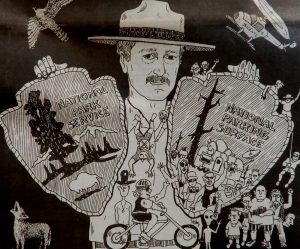
Ultimately, these suggestions offer nothing new, provide no solutions, or even come close to addressing the impacts that have, as Dabney noted, been a serious concern for two decades. Now that those ‘concerns’ are manifesting themselves as full-blown disasters, the proposals set forth by Utah’s “best and brightest” environmentalists are embarrassing at best.
If the environmental community is serious about the impacts of an industry that they seem only recently to have acknowledged, then they need to take bold steps and confront the problem head-on. And they need to be honest— with their constituents and with themselves.
Locally, the issue of Transient Room Tax monies and promotion lies at the heart of their hand-wringing. Their only solution is to hope they can take part of that revenue and use it to educate the masses of unwitting, uninformed tourists who don’t seem to understand what a garbage can is. As for the rest of that largesse…well, after all, they remind themselves—it’s free money.
But…
If somebody offered you heroin, all you wanted, and it was free, would you keep mainlining, just because it was such a good deal?
Because that’s what’s happening to the American West and to Moab. We know Industrial Tourism is destroying the community and the area around it. It’s disrupting lives and landscapes. It’s displacing the wildlife and defacing the wild country that environmentalists claim to cherish. So why cling to something that we all know is diminishing and degrading us and everything we love?
There is a way out of this. They can simply refuse to take the TRT money at all. There is no law that requires communities to accept the TRT promotional revenues in the first place.
This is heresy, of course, especially to the “business community” in Moab, but even their recent allies and BFF’s, mainstream environmentalists, freak out at the idea. Look no further than the recent guest essays by “Moab’s Greenest” for proof.
A few years ago, Moab’s Christie Williams Dunton interviewed the outspoken environmentalist/author Derrick Jensen on Moab’s public radio station, KZMU. She asked him just what ‘sustainable’ meant.
He replied, “You have to ask: ‘What will the land allow?’ That’s the question…end of conversation.” Williams could not have agreed more.
But does that sound like Moab’s current path to the future in any conceivable way? To the good environmentalist, does TRT money help achieve that goal?
What else could Moab do to deal with this mess? Keep doing what it’s been doing. It can continue to promote and prostitute itself, as has been its wont for 20 years. Already, the word is spreading–Moab is the poster child for what a tourist town should NOT become. Moab is becoming a synonym for shameless greed and profiteering, even in the national media. Eventually, Moab’s cachet will wither and die and the masses will seek other new “secret places” to ruin. It’s just a matter of time.
Or.., since the vast majority of travelers these days seem more interested in the status derived from posting their pseudo-adventures on social media, why not embrace this idea—visit www.fakeavacation.com? Send this company some family snapshots and they’ll superimpose your image onto a suitably noteworthy background. Want your friends on Instagram or facebook see you at the Grand Canyon? Boom…”Fake Vacation” can make it happen. The possibilities could be endless and the reduction of impacts on the environment immeasurable. (though it still leaves the massive Industrial Tourism economy a bit short).
In the end, an honest Moabite has to ask, could there ever, ever be anything less sustainable than a tourist economy? The last time Moab was truly sustainable was back in 1951, before Charlie Steen and uranium, and before ‘New Moab’ and before anyone had even heard the word.
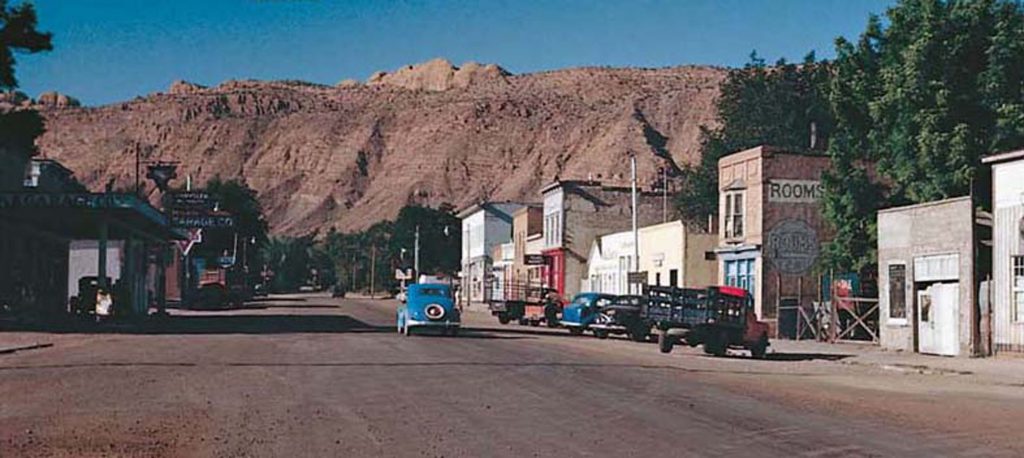
No one ever wants to deal with Wendell Berry’s timeless admonition:
” To the conservation movement, it is only production that causes environmental degradation; the consumption that supports the production is rarely acknowledged to be at fault. The ideal of the run-of-the-mill conservationist is to impose restraints upon production without limiting consumption or burdening the consciences of consumers.”
Ignoring Berry has been the norm and standard operating procedure for a very long time.
* * *
And finally, most, if not all of the people I’ve mentioned in this article believe in Climate Change and the risk it imposes on the planet, though Utah’s most outspoken environmental group apparently limits its climate concerns to the effects of too many ATVs and energy production.
But even the United Nations has reported that “tourism’s contribution to global warming was estimated to contribute between 5% and 14% to the overall warming caused by human emissions of greenhouse gases.”
And that’s a calculation from 2005. It will get worse. The UN report added:
“By 2035, tourism’s contribution to climate change may have grown considerably. A recent scenario…considers different emission pathways, including a ‘business as usual’ projection based on anticipated growth rates in tourist arrivals, as well as distances travelled by various means of transport.…The development of emissions from tourism and their contribution to global warming is thus in stark contrast to the international community’s climate change mitigation goals for the coming decades.
What hasn’t been discussed is that the factor most affecting the recent explosion in cross country and global tourism is the cheap price of fossil fuel energy. Anyone studying this decade’s staggering increases in tourism can see the corresponding decline in the cost of petroleum products. Tourism and fossil fuels–for cars, for airplanes, for petroleum-based nylon gear–are completely interwoven.
How do good environmentalists who claim to be alarmed by climate change also justify a three mile line of cars idling at the entrance of Arches National Park? If they were to embrace simple logic (an avoid the otherwise painful contradictions) tourism supporters would be flag-waving supporters of fracking and the expansion of fossil fuel exploration across the planet. Because that is their only hope for sustaining the tourist economy to be found in Moab in 2019.
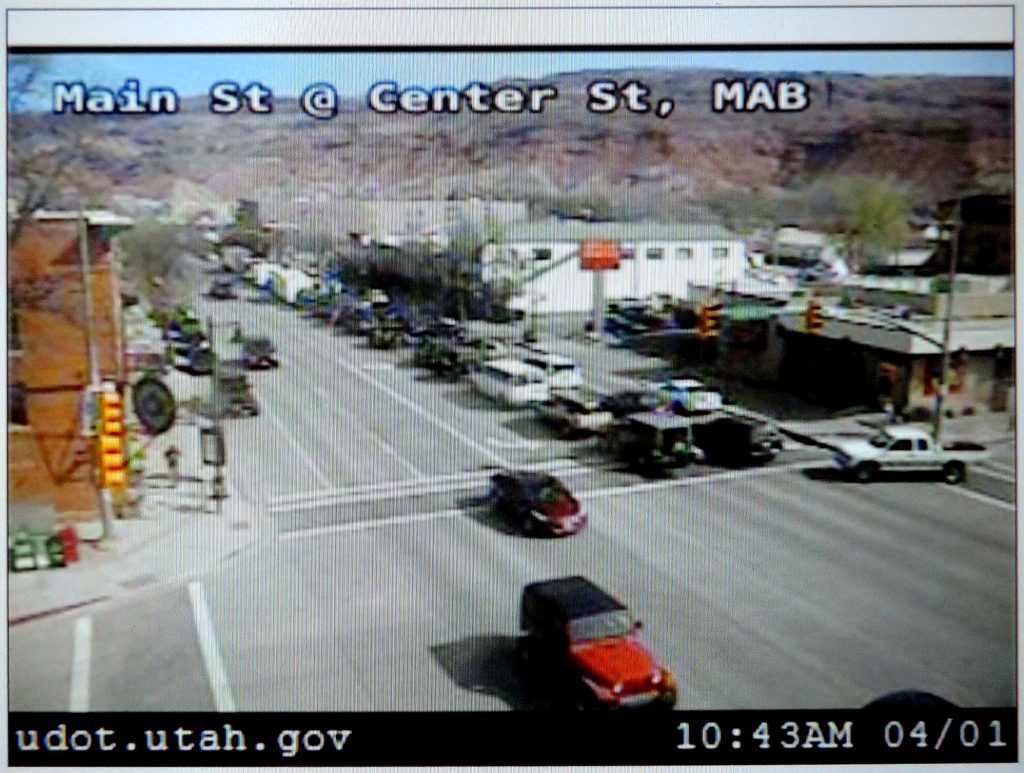
But never mind all that. Never mind the insane lines of cars and the intolerable suffocating crowds. Never mind the new hotels and the nightly rentals and the plague of condos and the zip lines and the endless tour companies and rock jumpers and yoga thrill seekers.
Never mind the unbridled support by the enviro mainstream of an industry that, by its very definition, requires the massive consumption of fossil fuels. Never mind the cynical marketing and commodification of the desire to just be alive and free in the canyon country.
Forget the loss of all the qualities in “Moabland” and the American West that were once cherished and revered by so many. Listen instead to the people who claim to care the most and get paid to do it. In essence:
Tourism is good for our economy. All we need to do is educate people, post some signs, print some fliers, and everything will be really pretty and nice.
Like much of the world today, our environmental talking heads say what they think plays best. They say what makes people (and themselves) feel good for the moment, and what permits their absolution from further concern or doubt. Meanwhile the West dies the most painful of Deaths.
The hard truth is, there are too many people, descending upon a finite resource, and consuming at a rate unprecedented in human history. And the environmentalist defenders of this madness bewilderingly think it can all be mitigated via informational signs and pamphlets.
To take the drastic actions needed to curtail this madness would require sacrifices that virtually no one–least of all the green mainstream— wants to confront. To take seriously the “solutions” that they propose is to do virtually nothing at all.
“Morphing Moab at the Speed of Greed” was the subtitle to my 2007 book, “Brave New West.” As cynical as I can be, the morphing happened a lot faster than I expected. To paraphrase Ed Abbey…
“Can you tell me where Moab, Utah is?”
“No…But I can tell you where it was.”
POSTSCRIPT: As we prepared to post this issue, an urban planning company called Landmark Design conducted some public workshops in Moab. Landmark’s home page identifies itself as a company…
“With over 30 years of experience, Landmark Design knows how to create constructive partnerships and effective relationships, encouraging public participation and out-of-the-box and sustainable solutions to meet project needs.”
Hosted by Grand County, the workshops were intended to provide Moab’s citizens an opportunity to discuss their community’s most urgent problems. Specifically Landmark asked for input on the current continued dramatic growth of overnight lodging.
Grand County participants were given some options—would they like unlimited growth? Controlled growth? The status quo? NO growth at all? Close the door? Most Moabites wanted option #5.
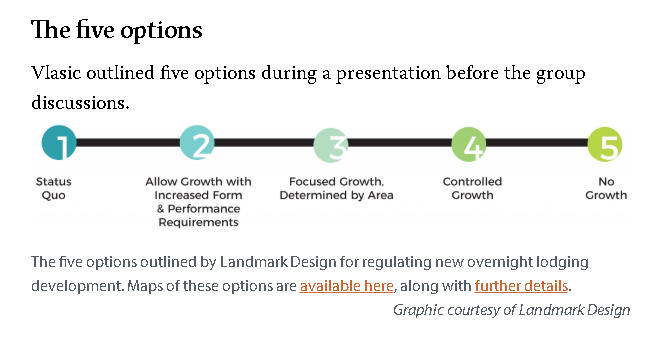
For all who participated in this effort, their optimism is commendable. But this isn’t the first time these kinds of questions have been asked. Or public forums have occurred, The crisis didn’t start last year.
Master plans? Workshops? Polls? Town hall meetings? Planning sessions? Over and over and over. Now in 2019, the same hand-wringing is happening again. For sure, the stakes are higher now, because so much has been lost. Could something have been accomplished back in 1993 when real estate prices were still reasonable and the demand for bigger and better tourist infrastructure hadn’t reached the current frenzied levels of greed and avarice? Maybe.
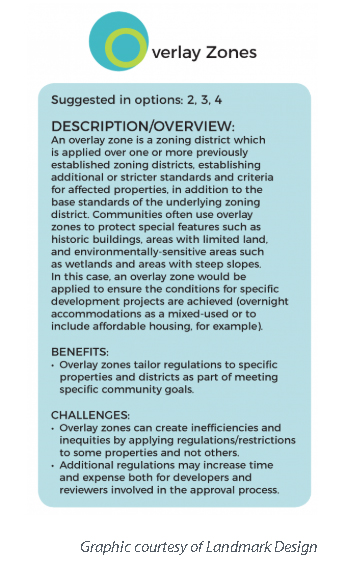
In 1993, The Zephyr interviewed then Grand County Councilman Bill Hedden, who offered his candid views and concerns for the future.
Hedden was part of the first seven-person Grand County Council. They were new to government leadership, “progressive,” and as the interview indicated, fully aware that Moab was on the cusp of something transformational. Interviewer Ken Davey asked hard questions—what actions the Council were willing to take to avoid the kind of future that has in 2019 become Moab’s’ sad reality. And what would be the consequences of those actions?
Here is part of the exchange between Zephyr reporter Ken Davey and Hedden, on the subject of moratoriums:
Zephyr: Two ideas have been raised recently, a moratorium on new subdivisions, and a moratorium on zone changes. Let’s take the first. How do you feel about that?
“I don’t think that I could support it right now. I feel like we don’t have our act together at all, so for us to tell everybody, because we don’t have our act together we’re going to bring the community to a halt is premature. If we get the master plan in process, which is now just beginning, if we get that really functioning, we can say to people, “for a certain period of time, for the next 5 months or something, we are not going to approve any new subdivisions that can’t be hooked up to the sewer,” or something like that, then I think that would be defensible. But to just say we’re going to impose a moratorium on new subdivisions would be foolish, because it would only have a 6 month life span, and we wouldn’t have the plan ready when it expired. I think we’re going to have to continue to take new subdivision requests on a case by case basis. But at the same time, push hard on the master plan.”
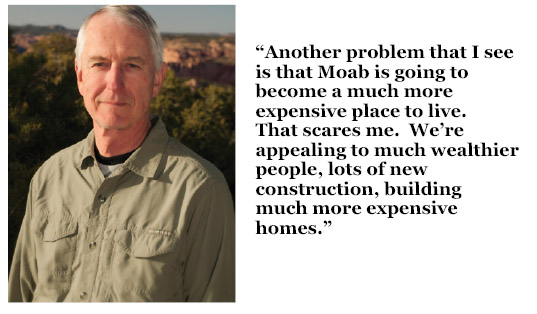
Could something have been done back then to stem what now seems like Moab’s inevitable fate? Read the interview and draw your own conclusions.
* * *
Back to 2019
Current efforts to curb growth are inspiring-some of the very people I’ve mentioned in this article. All of them now propose to stop further growth altogether. Each spoke passionately about Moab’s current explosion.
Dan Kent complained that, “Everybody realizes something crazy is going on…Industrial tourism is being driven by corporate interests from outside of town.”
The problem is, “corporate interests” have been claiming Moab as their own for almost 30 years. McDonald’s arrived in 1990. Within a couple years, so did Wendy’s, Denny’s, and a bevvy of other franchise restaurants.
In the winter of 1991-1992, seven brand new motels were built on Main Street. All of them corporate names. Twenty-seven years ago. A few of us spoke out. In one issue I dedicated an entire page in the Zephyr to photographs of every new motel, franchise restaurant and “adventure” shop that had been built in Moab—in ONE year.
We asked Zephyr readers: “What Does Moab Want?” And they told us…
Journalist Ken Davey wrote several excellent related articles in the Zephyr. In 1993, he addressed the issue of transient room taxes and the requirement that those funds were mandated for promotion. Local government did nothing to change the law or the spending requirements.
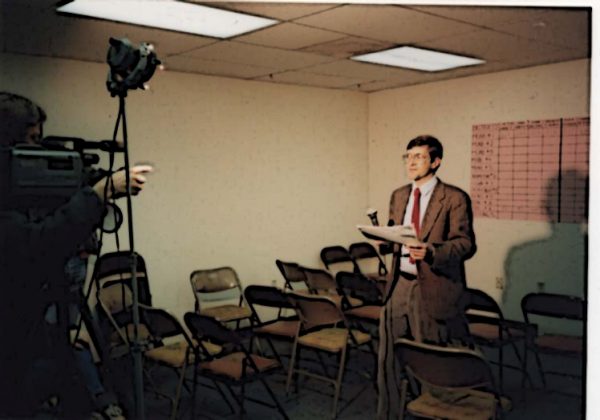
In 1992 The Zephyr called out the city and county governments’ culpability in allowing the kind of runaway uncontrolled growth from Industrial Tourism that was already establishing a beachhead in Moab.
In the June 1992 issue, Ken Davey wrote this:
“We need to get control, because right now, it’s out of control.”
“Where are the guidelines?”
“We need direction.”
All the above are quotes from Moab City Council members during a May 5 discussion of the impacts of bed and breakfasts, overnight accommodations, and the influx of visitors to Moab during the spring of 1992.
Davey noted that, “council members have had opportunities to make statements, in words and in action, that they truly want to gain that control. And in almost every case, they have pulled back, because they didn’t want to appear to stand in the way of development plans.”
He added. “… if elected officials defer and demur from taking action every time a developer or contractor complains, they are letting down the other 99 percent of the city’s residents, who want to feel that city leaders are taking their concerns into account.”
Click here to read all of Ken Davey’s 1992 commentary.
Two decades ago, The Zephyr was already being affected adversely by those “corporate interests” that Dan Kent seems to think are a recent phenomenon.
I remember when Jim Sarten finally retired and sold North American River Expeditions. He’d been a faithful advertiser for 14 years. But shortly thereafter, the new owner, a company based out of California, contacted me to say they planned to cancel their Zephyr ad.
I asked ‘why?’ They replied, “Not enough ROI.”
“ROI?” I had to look it up. It meant “return on investment.” There just wasn’t enough profit, bang for their buck, to stay in my little rag. It wouldn’t be the last time I heard that mantra to profit margins.
Also raising hell at the recent meeting was Liz Thomas. She told the county leaders that, “Enough is enough is enough…We already have more than enough hotels, condos and nightly rentals in our community…”
You will recall that Liz is the activist who wants to help ease the impacts of tourism by educating the public and posting more regulatory signs. But it was one of Moab’s most highly acclaimed environmentalists, Bill Hedden, who told the Zephyr in that 1993 interview:
“Just regulating the wild places and putting in porta potties and hardening campsites and paving trails may deal with the impacts, but it doesn’t help someone who knew that canyon when it was wild and no one else was in it.”
For Liz Thomas and for the rest of us who indeed “knew the canyon when it was wild,” all the new signage and educational pamphlets won’t solve the problem. It will do nothing to change the World of New Moab as it has become. Not an iota.
And finally, Zacharia Levine, Grand County’s Community and Economic Development director commented on the public response, noting that, “The public has been very clear in what they want…We’ve had more consensus on this issue than any issue I’ve ever worked on in this county.”
The general public has been clear on this point for almost 30 years. Very few Moab citizens wanted this kind of growth. Time and again, Moabites have expressed their concerns, and time and again, they’ve gone to workshops and meetings and vented and nothing happened.
Now in 2019, three decades after the first Industrial Tourism promoters and developers showed up in Moab licking their chops, and flashing their wallets, any honest person grounded in Reality has to wonder—even if you froze the entire tourist infrastructure of Moab…everything…and kept Grand County exactly as it is now….
…just what exactly would that leave you with?
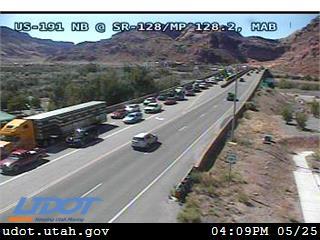
Jim Stiles is Founder and Co-Publisher of the Canyon Country Zephyr.
To comment, scroll to the bottom of the page.
Don’t forget the Zephyr ads! All links are hot!
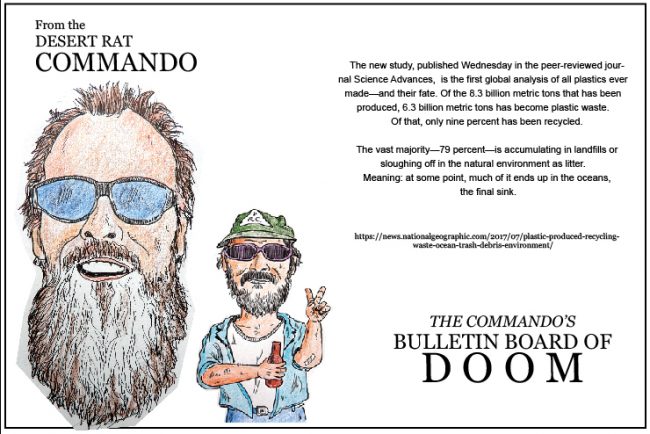
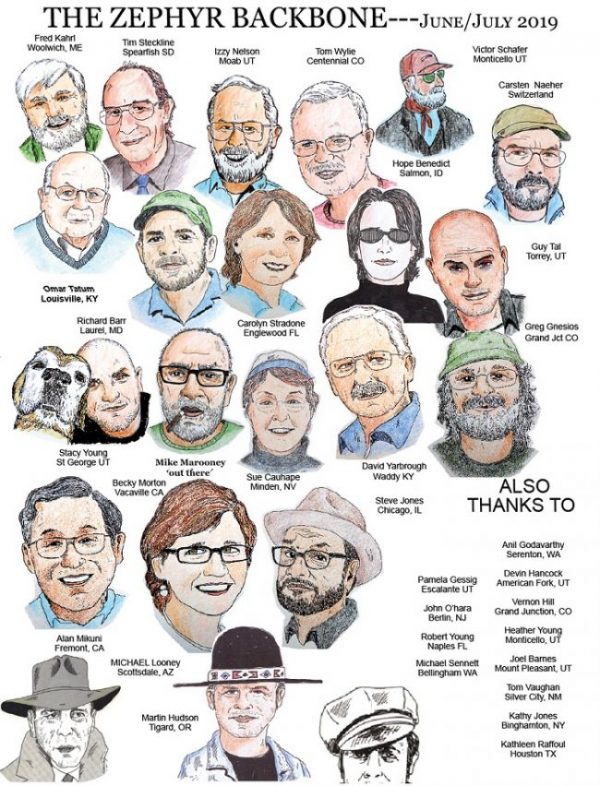




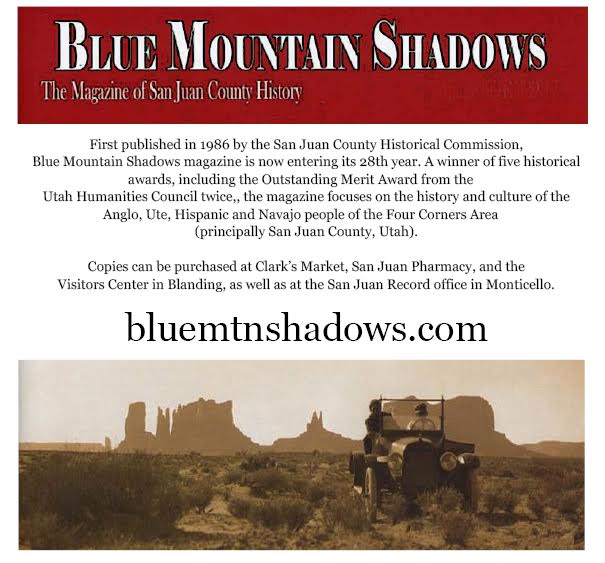


Like you Jim, I’ve been watching this happening with horror for 30 years. I see no solution so long as the profit motive reigns supreme. Moabites no longer have the ability to put on the brakes or turn off this engine of destruction since far too much of it is now controlled by outside interests. It is far beyond saddening.
Excellent essay.
I first went to Moab in 1991 and loved it. (I’m from New York.) I went back many times. But after 2002 or so, the crowds got to me.
Moab COULD have been developed in a much more thoughtful, sensitive way. But that didn’t happen. And now that it’s ugly and overflowing with cars and RVs and what have you…it’s more “popular” than ever.
Sadly, people don’t want to be alone; they want to be surrounded by lots of other people. And they don’t want to be “in” the wilderness; they want to “look” at the wilderness.
A stunning essay, braced by difficult facts.
Jim, that was an excellent article on the current status of Moab. Having grown up there in the 60s, I have very fond memories of a young man’s Utopia. I usually visit the area once a year, and have been increasingly dismayed at the overwhelming amount of greed without sustainably. This last year was the last straw. My Moab is gone. Mad Max vehicles allowed on city streets, umpteen campgrounds ALL full to capacity, etc. Sad. You tried to help years ago, but your words were not heard.
Dear Jim, wonderful article. I lived in Telluride from 1980 until 2012 and can relate to what Moab is going through. I’d come to Moab a couple of weeks a year in the Spring and the Fall, when you could drive up to the Arches entrance by yourself and a few cars on the road. We’d camp on the knob overlooking the river on Potash Road and hardly see another car. Telluride got lucky when it banned fast food and chain hotels but that was mainly because we had so little room to expand. Moab’s curse is the open range and empty spaces. If they haven’t yet proposed it yet, some bazillionaire will propose putting in a larger airport to handle bigger planes for nonstop service from NYC or LA. I miss Utah but know I could only stand it in the late Fall and early Spring before things went crazy. I hope the authorities get a grip on the problem but when the big money starts pushing and they own the law not much will change. Abbey we need you now.
Once again, Jim, you hit all the nails squarely on the head. Master Plan…shmh..I have seen multiple versions created then absolutely ignored before the ink was dry. City and county officials prostrate themselves to out of town developers and it is obscene how little they care about the impacts to residents. My thoughts on climate change….if natural disasters are going to get more frequent and worse all over the globe, tourism is going to become nearly impossible. Survival will be all humans can manage. Has any of our climate-change-believing-progressive governing body asked themselves what Moab will be then? Y’all let me know if you want to do some share cropping and raising cows, chickens and sheep.
Outstanding piece, Jim. I’ve been in the Paria-Glen Canyon end of Kane County for 25 years. Just the last three seasons have overwhelmed the Page, AZ, area. Whatever this place was, it won’t be tomorrow. SOCIAL MEDIA IS NOW THE GREATEST THREAT TO THE CANYON COUNTRY. The drum beat of canyon country vacation posers posting to YouTube, Facebook, and Instagram is deafening. Search for any recognizable places and you’ll find infinite selfies and video proving that the people posting had a way cooler vacation than you. There is a speeding train of industrial tourism beyond what anyone could have ever imagined heading toward us right now. Utah Tourism Division keeps pumping the “Mighty Five,” even when they’ve already shut the doors from overcrowding. How does that even make sense? Horshoe Bend went from 10,000 tourists annually in 2009, to two million last year. 168,000 hikers applying for 7,300 hiking permits at the Wave, with BLM proceeding toward 35,000 hikers. SITLA acquired thousands of acres of land in a questionable exchange with BLM between Paria Canyon and Grand Staircase for a huge Lake Powell area development once the state has squeezed the maximum revenue out of the St. George area. People who never considered themselves “environmentalists,” are wondering where their community went, and there has never been a better opportunity to make common cause with them. I hear repeatedly, ” We don’t want to end up like Moab or St. George.” I’ll add Sedona, Santa Fe, Park City, and Jackson Hole to the list. The Kane County politicians are trying to run the Vermilion Cliffs National Monument like it was in Utah. The Kanab BLM office and the Dixie/Arizona Strip Interpretive Association in St. George are doing everything possible to accommodate that. Nothing about Vermilion Cliffs is being run from Arizona. The wilderness groups don’t seem interested in our fate, even if it will eventually become their own. There are a bunch of tour operators, motel owners, and want-to-be photographers exploiting this place on social media for a buck and a rep. It’s like those millions of trickles that converge into a flash flood. Maybe, those of us in the red rocks who sense this danger should get together if anyone has some ideas about what to do.
All of that, exactly. All you’ve got to do is drive through town and pick up the new BLM brochure for what might as well be “Moab National Park” to see what can never be again.
Now they are in the process of doing the same with San Juan county! It makes me so sad.
Thanks for keeping it real, Jim, for standing up for your principles, and for raising issues that others would prefer to sweep under the rug and pretend don’t exist. I got the link to the article from a posting by a City Councilwoman in Boulder Colorado.
Here in the People’s Republic, there’s still a few spots I can get away from people and enjoy our natural surroundings if I know what time to go on what day. Crowds tend to gather at the same places at the same times, and I’ve scratched those off my list. I don’t have the answers, but I know we need to be honest about choices and tradeoffs, and that the choices and decisions that came before need to be challenged and re-assessed on a continuous basis. Here in Boulder, some of us sometimes have a proclivity to want things to stay exactly the way they are today, instead of what makes the most sense for tomorrow — be it what uses are allowed where, or which places are protected, and only those places.
Doesn’t add up for some of us. The world changes, and our public lands management needs to change with it. Be it local, state, or federal public lands — and even, God Save the Queen, private or NGO/TNC lands. Congress hasn’t touched our bedrock environmental or public lands laws for several decades, going on 50 years for most of them – which is why much of the noise these days is around rulemakings and what is or isn’t allowed or allowable pursuant to laws that are older than far more than half the population. The kids need to have their day and it’s coming. There’s risk and reward in change, but as the Ancient Greeks put it, “Everything flows and nothing remains the same” or “You can’t step into the same river twice . . . ”
As for Utah, I was always in the camp that the new National Monuments decidedly need to be managed by BLM instead of NPS, and Park status would likely be the beginning the end for those sacred landscapes. Entry stations, entry fees, designated campgrounds, and touring buses are anathema to everything that’s mystical and awe-inspiring about Bears Ears and Grand Staircase Escalante. I’ll fight like hell to see them restored to the original boundaries, and what I know about the Utah Land Exchange Act made sense on the whole, and a whole lot of sense.
What makes sense in Boulder CO might not make sense for Moab; or the mountains and the desert, or federal lands and local open space. What does make sense across the board is to continually question our beliefs and our laws, and to pursue change and reform that responds to todays opportunities and challenges, rather than assume that anybody had it all right yesterday, and that will always be the final word.
Think for ourselves, and don’t let any person or group do our thinking for us, whether its the UN Environment Program, the 45th or 46th POTUS, the General Assembly at the Statehouse, the environmental group down the street, the writer who was once a ranger at Arches, the present or former editors and writers at High Country News, the publisher of the Canyon Country Zephyr ;), of some modern-day Greek geezer with a soft spot for Bernard Devoto who likes to tell his kids about the old days and counts among his treasured memories that slide show by Stu and Barb Krebs at the Montrose Library around 1990 of that time they explored Glen Canyon by boat and foot before the dam. . .
Wayback 40 years B.B., an NPS employee in Needles, would rant about a new hotel being built in the north end of town. One hotel. He jokingly(?) threatened to use the big neon sign going up for target practice. Wish he had, it may have started an Alice’s Restaurant Revolution. There were times back then, during the ’80-’81winter season I was the only soul in the Needles District. But a few miles outside the park boundary a drilling rig punched a hole through the salt layers 3-4000′ down. The plan was to store nuclear waste there, transported by rail downriver from Moab to Lockhart basin and on to Davis Canyon where there would be a large man camp and shafts to the salt formation. It was a real threat through the first Reagan term, I couldn’t imagine a more disastrous thing happening there. I’d dream of Hayduking the operation and escaping across Dark Canyon Plateau and through the Bear’s Ears, even laid in some caches. I wondered if there were enough people who knew or cared to make a noise to stop it, and would pad park registers with anti-nuke comments using silly aliases. Turned out there was enough noise, even the gov’ner got on board. But then I started seeing visitors show up, with their Outside magazines, asking if they were on the right track to this cool spot in the glossy photo. Moab was still a uranium mill town and a lot of folks didn’t think wreckreation could ever provide the economy uranium could. Boy were they wrong.
I spent ’01-’12 in Grand Teton NP, similar story there. ditto Alaska and Colorado.
But I read Arctic-News.Blogspot and think none if it may matter, Homo sapiens may not evolve quickly enough. The corvids, coyotes, and cockroaches will be talking about the machine obsessed naked apes that used to be.
Sometimes I feel like that old Iron Eyes Cody PSA. And that cartoon of the evolving apes, with the last figure, a sapiens, turned around saying “Go back, we f*cked up”
Good historical context. For those of us still liking a quiet rural life, reservation systems to set even a foot onto any public land seems the next logical step. Let’s see how Arches reservation system works out and “ Do it like a Local.” Pamphlets might be good too but the wealthy are here and they may get banned like plastic garbage sacks. No worries though, the favorite word is to make everything sustainable and then it will satisfy the green minded folks. Just feeling a bit sarcastic right now. Hopefully someone can find a sustainable solution.
Reality a cloud of possibilities, and history another stream of possibilities? I’ll not mention where I grew up or where I came from. Once upon a time it was rural, wild and quiet. Two generations on it has a new face and manner; developed, cement, asphalt, busy, lots of autos and youngsters who know no different (and they rarely if ever mention the change). I hit Moab, Canyonlands, Cedar Mesa over 40 years ago. When Jim says there “might have been ways to alter Moab’s destiny – but those opportunities were squandered years ago.” (what were those secrets Jim, do you have a nod, wink or offering?) I think of the Internet, Social Media and the Utah Travel Council that for decades spun and spent money. And the evolution of the slick rock trail,I walked it many times before bikes appeared and use to chat with jeepers at Milt’s who were low key back then. The users groups now are mostly in separate camps & mostly don’t communicate or even engage. Myself years back I backpacked, backcountry skied, then mountain biked for decades and scrambled around off trail so many years. I don’t remember the year – maybe 20-25 back (near Easter) when I mistakenly showed up with some friends and saw the legion of jeepers lined up on side streets and Main Street – it was a shock (at least to me); but then these days, guide books galore and web sites send machine “users” onto the redrock nearly year round. How to turn it off, slow it or move it another direction? Arches needs changes soon. Much of the rest of it is damaged beyond repair. The only hope is that each new generation is not as cynical or despondent as the last and that there is some last vestige of wonder in some quiet corners at some hours. My, over 100 plus vehicles on Poison Spider Mesa route and maybe 20-30 mountain bikers; a work mate explained it to me with photos and a video, he was there in early May on a week day. He told me it was a “bit busy”.
I already had one “crack” but this is supposedly “history”. F. A. (Fran) Barnes and his legion of books/maps; Ken Sleight who met Abbey and others near Desert Solitaire period. Bates Wilson, architect of the goodness or madness of National Parks and Monuments. Authors Steve Allen and Michael Kelsey who spilled ubiquitous stories, maps and descriptions of zones in the area. Shane Burrows (channeling Moab Matt) and his Climb Utah site that put Moab and Arches on the canyoneering radar, big time. BLM and Utah Travel Council juggling promotion and acceleration of visitors; the former who put little restriction of massive motorized travel in contiguous public land zones. River travel for the casual or advanced, bringing ever more people; competing with 4WD and mountain bikes along with rock climbers galore. Utah politicians (for decades) offering no funding for alternative parking or shuttles in Arches National Park. And then the growth and expansion of Easter Jeep Safari to Fall Jeep Safari, to Land Rover Safari. Colorado’s Charles A. Wells, one, two, three books geared toward the 4 Wheeler and (my) the new wave UTV crowd that has swarmed the Moab backcountry. (Fins & Things once was a quiet zone in the late fall for a walk or stroll, but the constant “whine” has now changed that.) Industrial Strength Tourism – many in the outdoor crowd should get on their knees, apologize and change practice. But then visits to the Maze, W Needles and former Bears Ears Zones of White Canyon, Gravel, Cheesebox, Fable and parts of Beef Basin (never have I sensed anything close to “ISD”). The river runners, climbers, hikers, bikers, canyoneers (or driving, walking tourists); were they to come to the table and consent in changing their ways would the “elephant in the room” the Four Wheel crowd be willing to moderate their style also – alternative days/odd/even use or non-use of some zones? Or maybe none of this matters – it’s just history – and something/whatever happens to Arches and the user groups push, shove, shout at the Park/BLM in hopes they get their way? VERP – Visitor Experience, Resource Protection (or the alternative mantra, ACCESS, and always more of it “needed”?
We are having the same problem in Texas. Our precious Big Bend National Park lodge is being destroyed by the NPS because fixing the historic lodge would be too expensive. We stayed there in 2014 and it was so nice and peaceful. It will not be the same now. The fabulous Texas Hill Country that was so lovely 40+ years ago and so wonderful to visit and to enjoy nature, have been excessively developed just like Moab. It is being destroyed too. SAD
i keep thinking that the end-uv-the-whirled is around the corner, and
i keep thinking that the enduvTheWHIRLED is around the corner, and
(yawn?) i keep thinking that the end of things, the world, reality-as-we-(think)-we-know-it, is around the corner,
and …